This wonderful Cornish workshop and museum is dedicated to the legacy of studio pottery trailblazer Bernard Leach
Why we’re still talking about the remarkable 18th-century artist Angelica Kauffman
Why we’re still talking about the remarkable 18th-century artist Angelica Kauffman
28 Feb 2024
Angelica Kauffman was a boundary breaker and brilliant social networker. As a new exhibition of her works opens at London’s Royal Academy, curator Annette Wickham reveals seven must-know facts about her
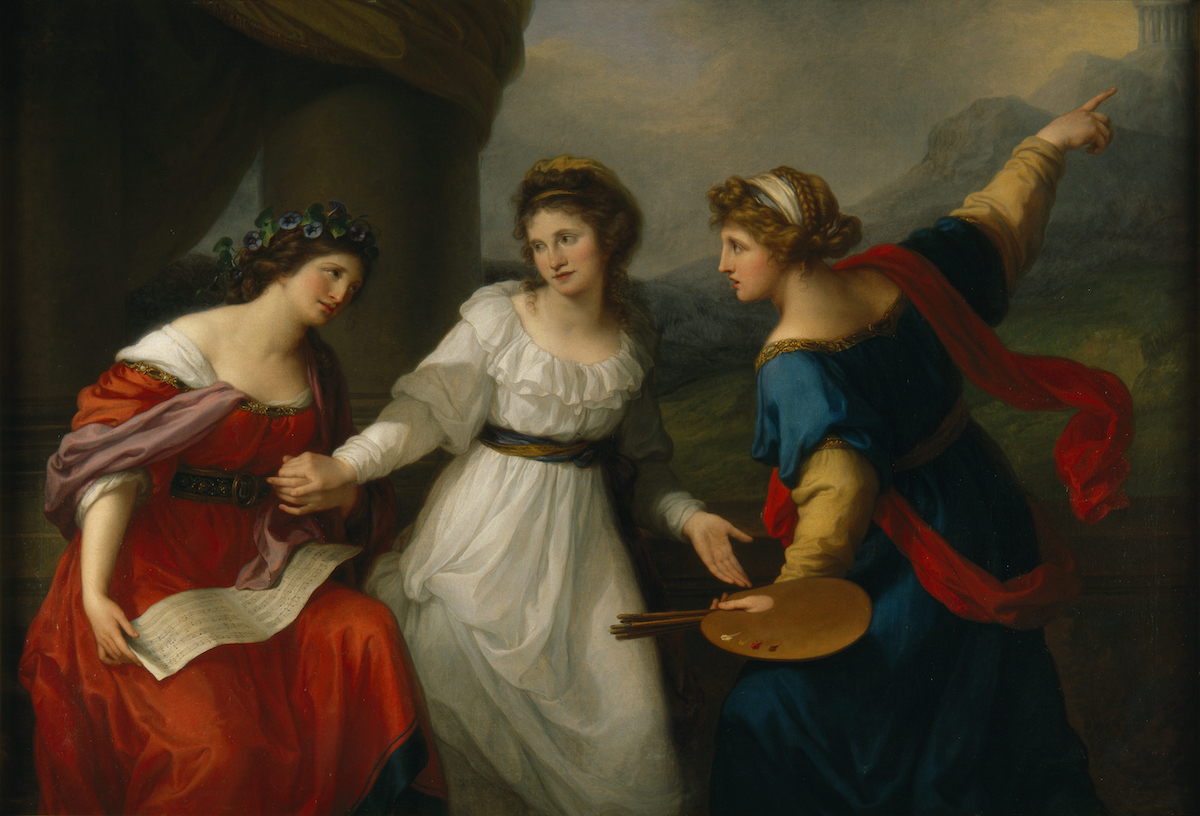 Angelica Kauffman’s Self-portrait at the Crossroads between the Arts of Music and Painting, 1794. Image: National Trust Collections (Nostell Priory, The St Oswald Collection). Purchased by private treaty with the help of a grant from the Heritage Lottery Fund 2002. Photo: © National Trust Images/John Hammond
Angelica Kauffman’s Self-portrait at the Crossroads between the Arts of Music and Painting, 1794. Image: National Trust Collections (Nostell Priory, The St Oswald Collection). Purchased by private treaty with the help of a grant from the Heritage Lottery Fund 2002. Photo: © National Trust Images/John Hammond
1. Angelica Kauffman was a child prodigy
Born in 1741, Kauffman excelled as a child not just within the field of art but also in music. She produced her first self-portrait in oils around the age of 13, as well as singing and playing the clavichord. As an only child she was coached by her parents, Cleophea Lutz, a Swiss singer, and Johann Joseph Kauffman, an Austrian artist. After her mother’s early death in 1757, Kauffman chose to pursue painting as a career but continued to sing and play music for friends throughout her life.
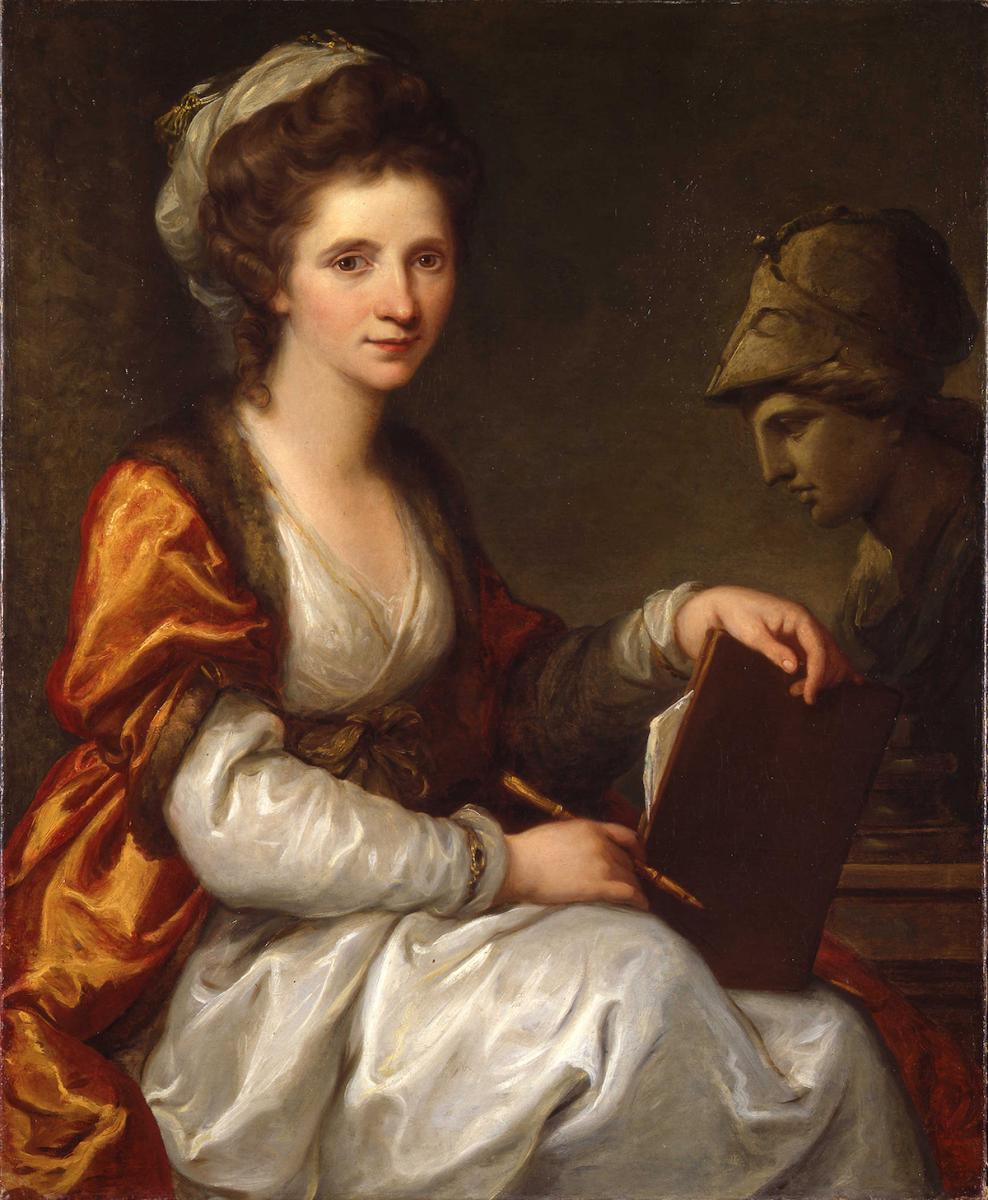 Kauffman’s Self-portrait with Bust of Minerva, c.1780–81. Image: Grisons Museum of Fine Arts, on deposit from the Gottfried Keller Foundation, Federal Office of Culture, Bern
Kauffman’s Self-portrait with Bust of Minerva, c.1780–81. Image: Grisons Museum of Fine Arts, on deposit from the Gottfried Keller Foundation, Federal Office of Culture, Bern
2. She was a truly international artist
Kauffman was born in Chur in Switzerland but went on to enjoy success in several countries over the course of her career. As a child she moved frequently with her family between Switzerland, Austria, Germany and northern Italy. In the 1760s she and her father travelled around Italy with extended stays in Florence, Rome and Naples, where she was able to study ancient Greek and Roman sculpture and the works of the Old Masters at first hand. Moving to London in 1766, Kauffman stayed for 15 years before later settling in Rome in 1782.
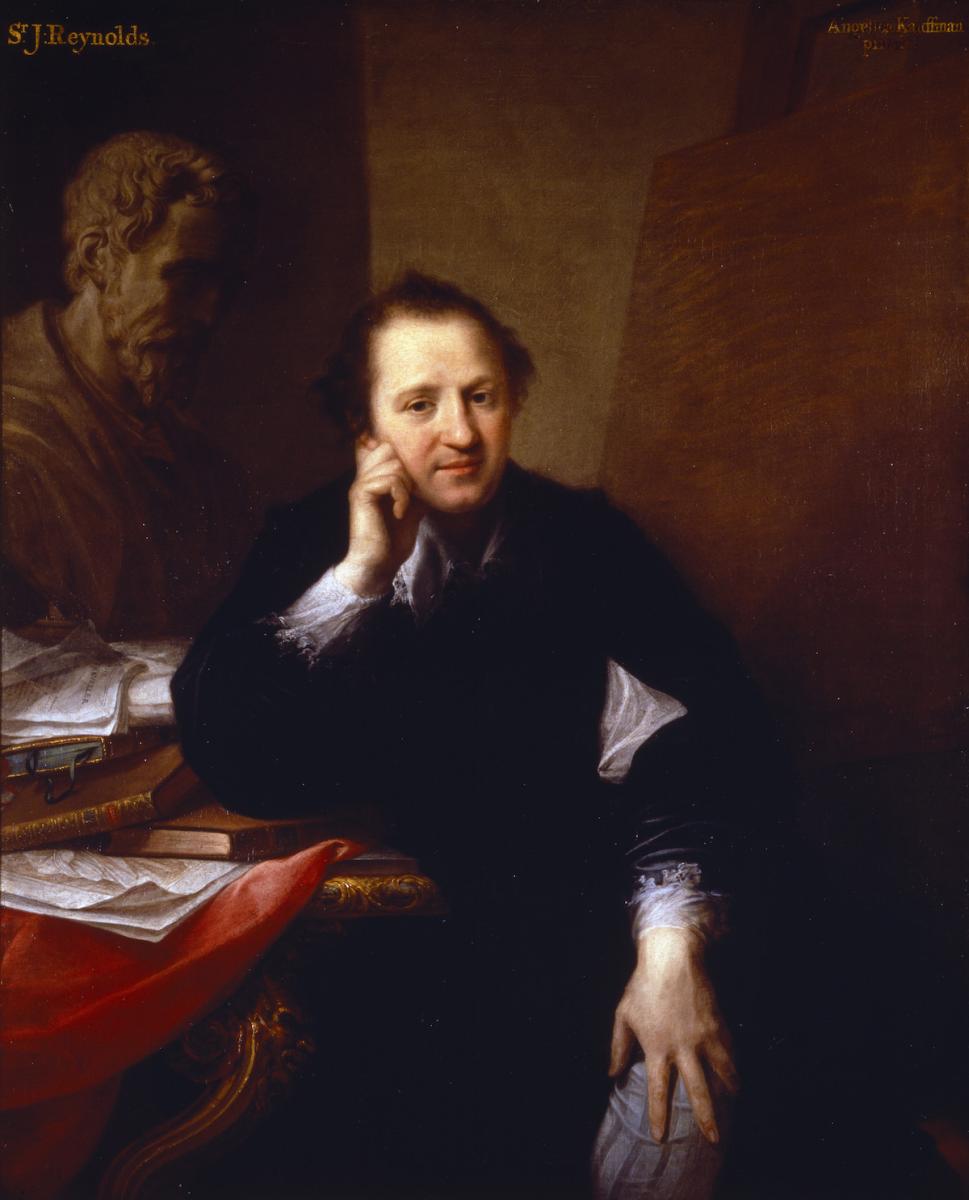 Portrait of Joshua Reynolds, 1767, by Angelica Kauffman. Image: National Trust Collections, Saltram, The Morley Collection (accepted in lieu of tax by HM Treasury, and transferred to The National Trust in 1957) inv. NT 872180. Photo: © National Trust Images/Rob Matheson
Portrait of Joshua Reynolds, 1767, by Angelica Kauffman. Image: National Trust Collections, Saltram, The Morley Collection (accepted in lieu of tax by HM Treasury, and transferred to The National Trust in 1957) inv. NT 872180. Photo: © National Trust Images/Rob Matheson
3. Kauffman was a founding member of the Royal Academy of Arts
In London, Kauffman quickly established herself among the capital’s cultural elites, becoming known for her fashionable history paintings, as well as society portraits. Her sitters included Queen Charlotte and Sir Joshua Reynolds. In 1768 such contacts ensured that she was one of only two women – the other being the painter Mary Moser – among the 36 founding members of the Royal Academy of Arts. When the Academy moved into its elegant new premises at Somerset House in 1780, Kauffman was given a prestigious commission to paint four ceiling paintings depicting the ‘Elements of Art’.
4. She loved painting heroic women
Kauffman had a knack for finding unusual and original subjects to paint and often focused on strong female characters. One example shows the intriguing scene of Queen Eleanor of Castile saving the life of her husband, the future King Edward I. While on the Ninth Crusade in the Middle East, he was attacked with a dagger that was thought to have been poisoned. Kauffman depicted a later, fanciful account of the incident that credited Eleanor with sucking the poison from Edward’s wound in a display of heroism and marital devotion.
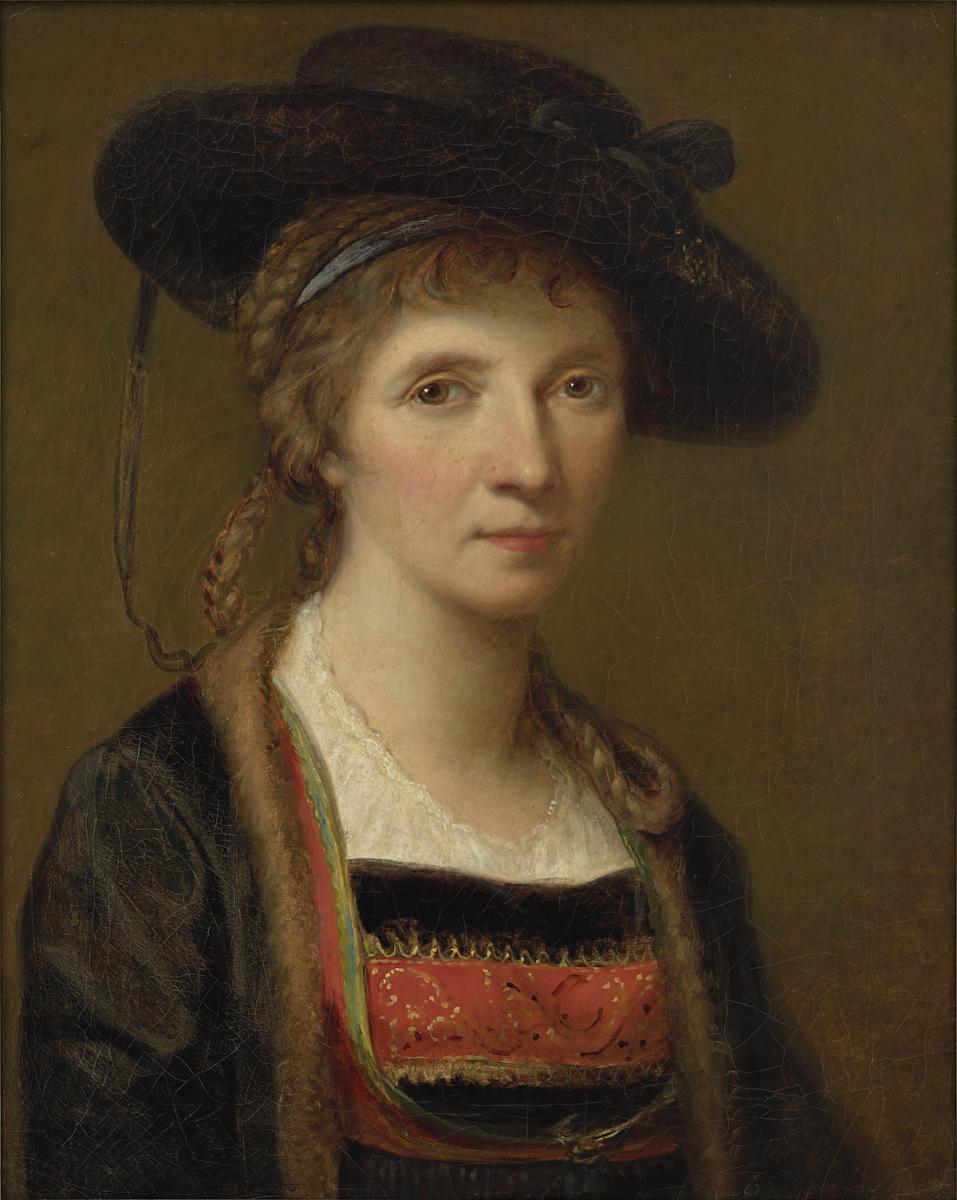 Self-portrait in the Traditional Costume of the Bregenz Forest, 1781, Angelica Kauffman. Image: Innsbruck, TLM, Ältere kunstgeschichtliche Sammlung, inv. Gem 301. Photo: Innsbruck, Tiroler Landesmuseen
Self-portrait in the Traditional Costume of the Bregenz Forest, 1781, Angelica Kauffman. Image: Innsbruck, TLM, Ältere kunstgeschichtliche Sammlung, inv. Gem 301. Photo: Innsbruck, Tiroler Landesmuseen
5. She was an extraordinarily talented self-portraitist
Taking charge of her own image, Kauffman presented herself through her self-portraits, which were widely reproduced as prints, which helped to increase her fame. In these works she often depicted herself as an elegant, ageless figure. In several of her self-portraits Kauffman also holds drawing instruments, probably referring to the Renaissance concept of ‘disegno’, which was known as ‘the father’ of all the arts. ‘Disegno’ was a word derived from the Italian for drawing or design, but in this context comes laden with meaning: it alludes to the artist’s drawing and intellectual powers, giving them the ability to take a painting from craft to art.
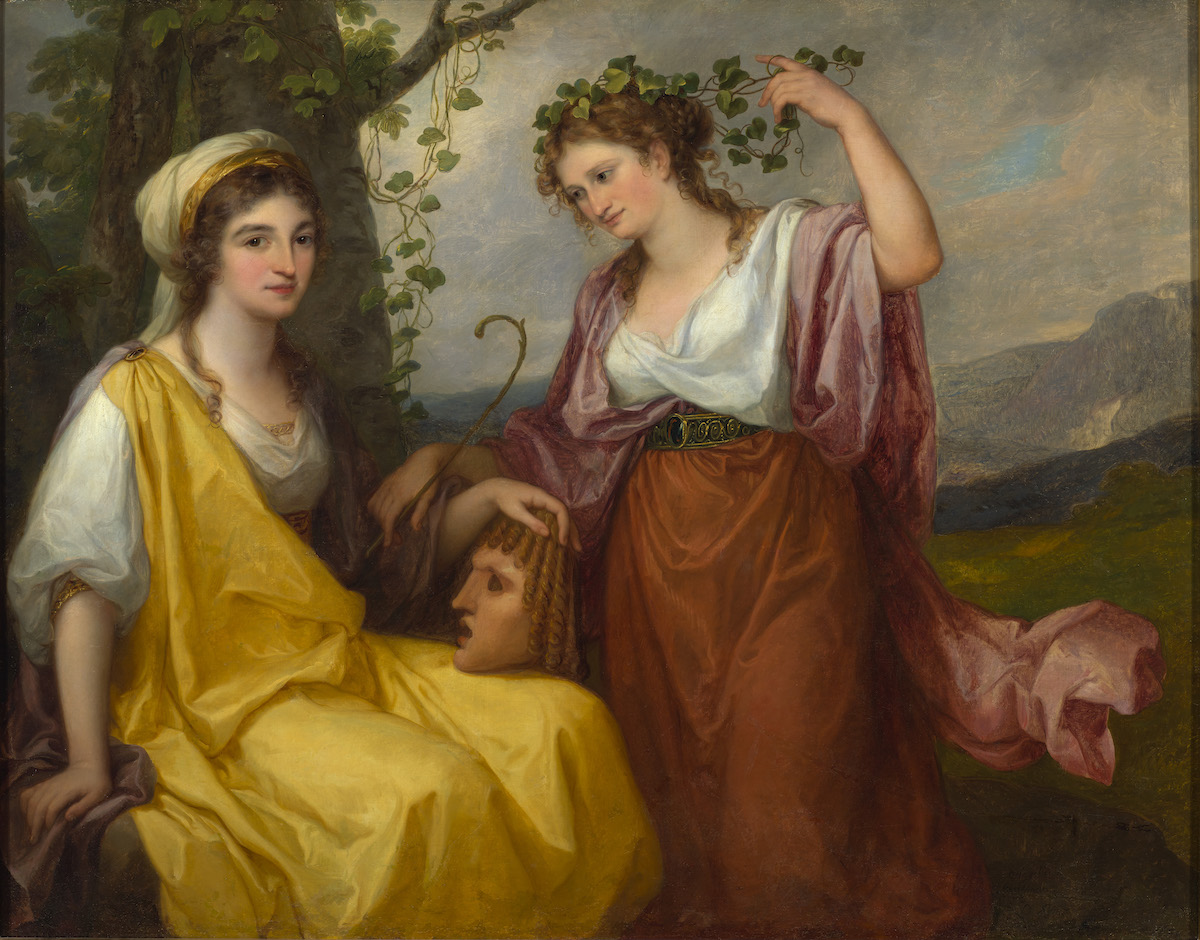 Angelica Kauffman’s Portraits of Domenica Morghen and Maddalena Volpato as Muses of Tragedy and Comedy, 1791. Image: National Museum in Warsaw MNW. Photo © Collection of National Museum in Warsaw. Photo: Piotr Ligier
Angelica Kauffman’s Portraits of Domenica Morghen and Maddalena Volpato as Muses of Tragedy and Comedy, 1791. Image: National Museum in Warsaw MNW. Photo © Collection of National Museum in Warsaw. Photo: Piotr Ligier
6. Famous figures were drawn to her
Kauffman was an exceptionally sociable character, with many friends both in England and in Italy. She counted numerous artists, writers and performers among her social circle, as well as aristocratic patrons. She painted portraits of several famed friends, including Emma, Lady Hamilton, David Garrick and Wolfgang von Goethe. Here in the work above we see Domenica Morghen, who was the daughter of Venetian engraver Giovanni Volpato and who, for a brief period, had been engaged to the sculptor Antonio Canova. Maddalena Volpato was Morghen’s sister-in-law, and both were part of Rome’s literary and social circles. When Kauffman died in Rome in 1807 her grand funeral was organised by Canova.
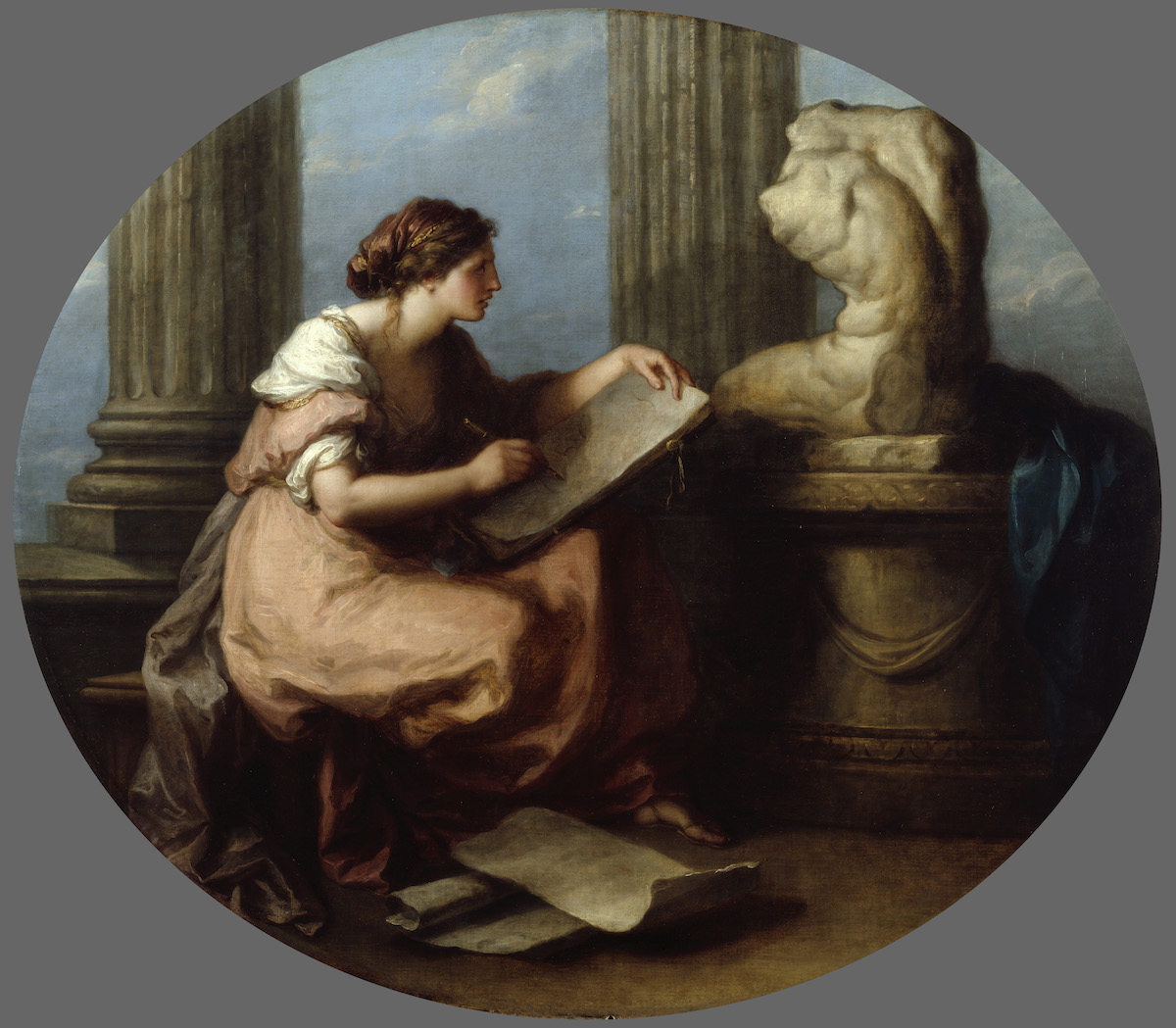 Angelica Kauffman’s Design, 1778–80. Image: © Royal Academy of Arts, London. Photo: John Hammond
Angelica Kauffman’s Design, 1778–80. Image: © Royal Academy of Arts, London. Photo: John Hammond
7. The whole world was ‘Angelicamad’
This is how one contemporary described Kauffman’s fame during her lifetime. She herself declared that, in London, she was ‘known by everyone’. This was largely a positive that helped to bring her more commissions. Not only were her paintings highly sought after, but Kauffman’s work was also widely reproduced in the form of prints as well as being incorporated into decorative designs that appeared on luxury objects from fans to snuffboxes.
Angelica Kauffman is at the Royal Academy of Arts, Piccadilly, London
1 March–30 June
About the Author
Annette Wickham
is curator of works on paper at the Royal Academy of Arts and is curator of the exhibition Angelica Kauffman
JOIN OUR MAILING LIST
Become an instant expert!
Find out more about the arts by becoming a Supporter of The Arts Society.
For just £20 a year you will receive invitations to exclusive member events and courses, special offers and concessions, our regular newsletter and our beautiful arts magazine, full of news, views, events and artist profiles.
FIND YOUR NEAREST SOCIETY
MORE FEATURES
Ever wanted to write a crime novel? As Britain’s annual crime writing festival opens, we uncover some top leads
It’s just 10 days until the Summer Olympic Games open in Paris. To mark the moment, Simon Inglis reveals how art and design play a key part in this, the world’s most spectacular multi-sport competition



